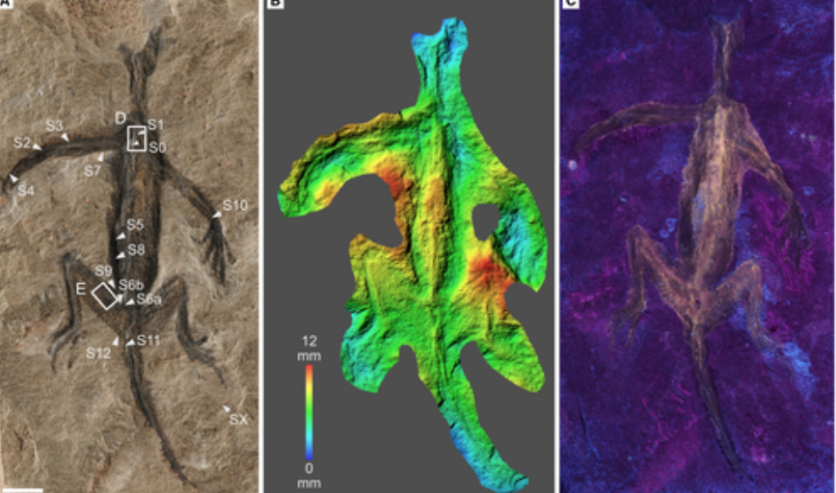Scientists recently discovered that what was thought to be a remarkable 280-million-year-old dinosaur fossil with preserved soft tissues is actually a fake.
This discovery, reported by University College Cork, sheds light on a decades-long mystery and calls into question our understanding of ancient reptiles.

Fake Dinosaur Fossil
The fossil, Tridentinosaurus antiquus, was discovered in the Italian Alps in 1931. Initially hailed as a critical specimen for understanding early reptile evolution, its body outline appeared dark against the surrounding rock, leading experts to believe it had preserved soft tissues.
However, new research led by Dr. Valentina Rossi of University College Cork, Ireland, has revealed an astonishing truth: the fossil's well-known preservation is mostly just black paint on a carved lizard-shaped rock surface.
Dr. Rossi and her team's findings, which were published in the journal Palaeontology, sent shockwaves through the scientific community. The discovery calls into question previous assumptions about Tridentinosaurus antiquus and emphasizes the importance of exercising caution when interpreting fossils.
The Truth About the Fossil
Dr. Rossi notes that fossil soft tissues are rare, but when found, they can provide valuable biological information. However, the experts' analysis revealed that the texture and composition of the material did not resemble genuine fossilized soft tissues.
Using advanced scientific techniques such as ultraviolet photography and microscopic analysis, the researchers discovered the truth about the fossil's deceptive appearance.
Preliminary investigations revealed that the entire specimen had been coated with a paint-like material, which was likely done to improve its visual appeal. This discovery has dispelled decades of speculation about the reptile's classification and geological history.
While the fossil's soft tissues may have been fake, all hope is not lost. The bones of the hindlimbs, particularly the femurs, appear genuine despite being poorly preserved. The researchers also discovered tiny bony scales known as osteoderms, which resembled crocodile scales, on what appeared to be the animal's back.
Despite the disappointment of discovering a forgery, this study demonstrates the effectiveness of modern analytical paleontology. Using rigorous scientific methods, researchers solved a century-old mystery and cleared the record on Tridentinosaurus antiquus.
Dinosaur Hoax on Facebook
In related news, misconceptions about dinosaurs have recently spread on the social media platform Facebook. One post claimed that dinosaurs were invented in the nineteenth century to validate Darwin's theory of evolution, but experts have refuted this.
According to AFP fact-checking, historical evidence from ancient civilizations shows that large fossil discoveries predate the nineteenth century, casting doubt on the idea of a dinosaur hoax.
Experts emphasize the validity of dinosaur discoveries, citing thousands of complete and nearly complete skeletons discovered worldwide. Museums, including the Melbourne Museum, have confirmed the authenticity of dinosaur fossils, dispelling any doubts about the existence of these ancient creatures.
While the Tridentinosaurus antiquus fossil may have been a forgery, the scientific community remains committed to learning the truth about Earth's prehistoric past.
Stay posted here at Tech Times.
Related Article : What Killed the Dinosaurs After the Asteroid Impact? Scientists Finally Have an Answer

ⓒ 2025 TECHTIMES.com All rights reserved. Do not reproduce without permission.




